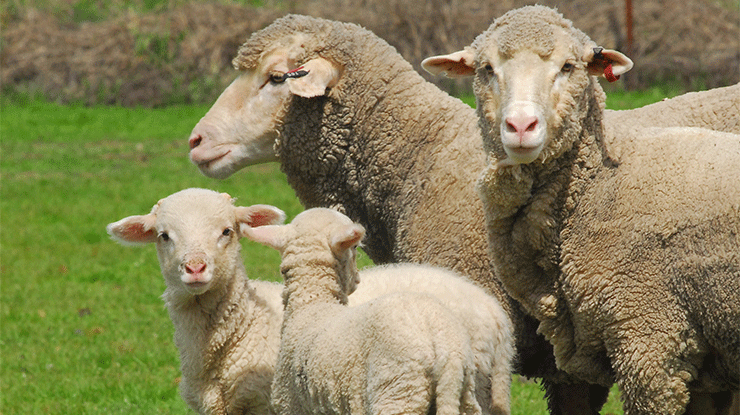
To join or not to join?
Increasing the number of ewes mated to lamb at 12–14 months can be an effective way to build replacement ewe numbers, increase lamb supply and boost farm profitability – particularly with maternal breeds in high‑rainfall areas.
An MLA‑funded research project, led by Dr Andrew Thompson from Murdoch University, used economic modelling to guide the decision‑making process behind whether or not to join maternal or Merino ewes at seven to nine months of age.
“Joining ewe lambs is not for everyone,” Andrew said.
“You need to have the right sheep, be operating in the right environment with the right season, and be doing everything else right before you consider this option.”
Andrew said producers should first consider whether there are other production issues that are likely to have a higher pay‑off, including improving pasture production and utilisation, or improving reproduction from mature or hogget ewes.
The project drew on prior MLA and Murdoch University‑funded research into joining ewe lambs. It was made possible with the contribution of significant data sets from Cashmore Oaklea Performance Maternals (see story opposite) in south‑west Victoria and Moojepin Multi‑Purpose Merinos in WA’s Great Southern region.
Ewe lamb focus
Andrew said the earlier work quantified the effects of sire genetics on ewe lamb reproductive performance. It showed reproductive rate increased by about 4% per extra kilo of live weight at joining (when below 45kg).
“The earlier research found that improving the nutrition of ewe lambs during joining also increased reproductive rate,” he said.
“It also quantified the impacts of live weight and age‑at‑joining on the survival of the ewe lamb dam and her progeny, carryover effects on the ewe’s performance when joined at 19 months, and the productivity of her progeny.
“While there are still some knowledge gaps, we know a lot more than we did and this is what allowed us to model the cost‑effectiveness of joining ewe lambs.”
The results are in
The economic analysis was carried out for Merino and maternal ewe lambs in three different regions, and for autumn and spring‑lambing flocks.
Results included the following:
- Mating maternal ewe lambs was profitable in all regions and times of lambing examined.
- Joining maternal ewe lambs was more profitable than joining Merino ewe lambs.
- Profits from joining ewe lambs were greater in environments with a longer growing season, regardless of ewe breed.
- Joining maternal ewe lambs was not sufficiently profitable to be a priority in wheatbelt regions with low rainfall.
- It was more profitable to join ewe lambs at eight months of age, rather than seven months.
- The economic optimum was for live weight at joining to be around 75% of mature weight (42–45kg) and, for all scenarios, feeding to gain more weight during joining itself was more profitable.
New decision‑support tool
Andrew said a decision‑support tool has been developed to help producers and consultants determine how mating ewe lambs should be evaluated alongside other production alternatives.
“The tool also determines the optimal management system for an enterprise mating ewe lambs, together with the impacts on profitability of sub‑optimal management,” he said.
“It’s in the prototype stage now and we’re aiming to have it in limited use by the end of the year.”
Supporting extension and adoption
In preparing the project’s final report, Andrew and economic analyst John Young summarised their major findings into draft key messages for improving the reproductive performance of ewe lambs.
These will be refined based on testing of the tool, then shared via existing extension and adoption programs and materials, including MLA Tips & Tools, Bred Well Fed Well and Profitable Grazing Systems.



